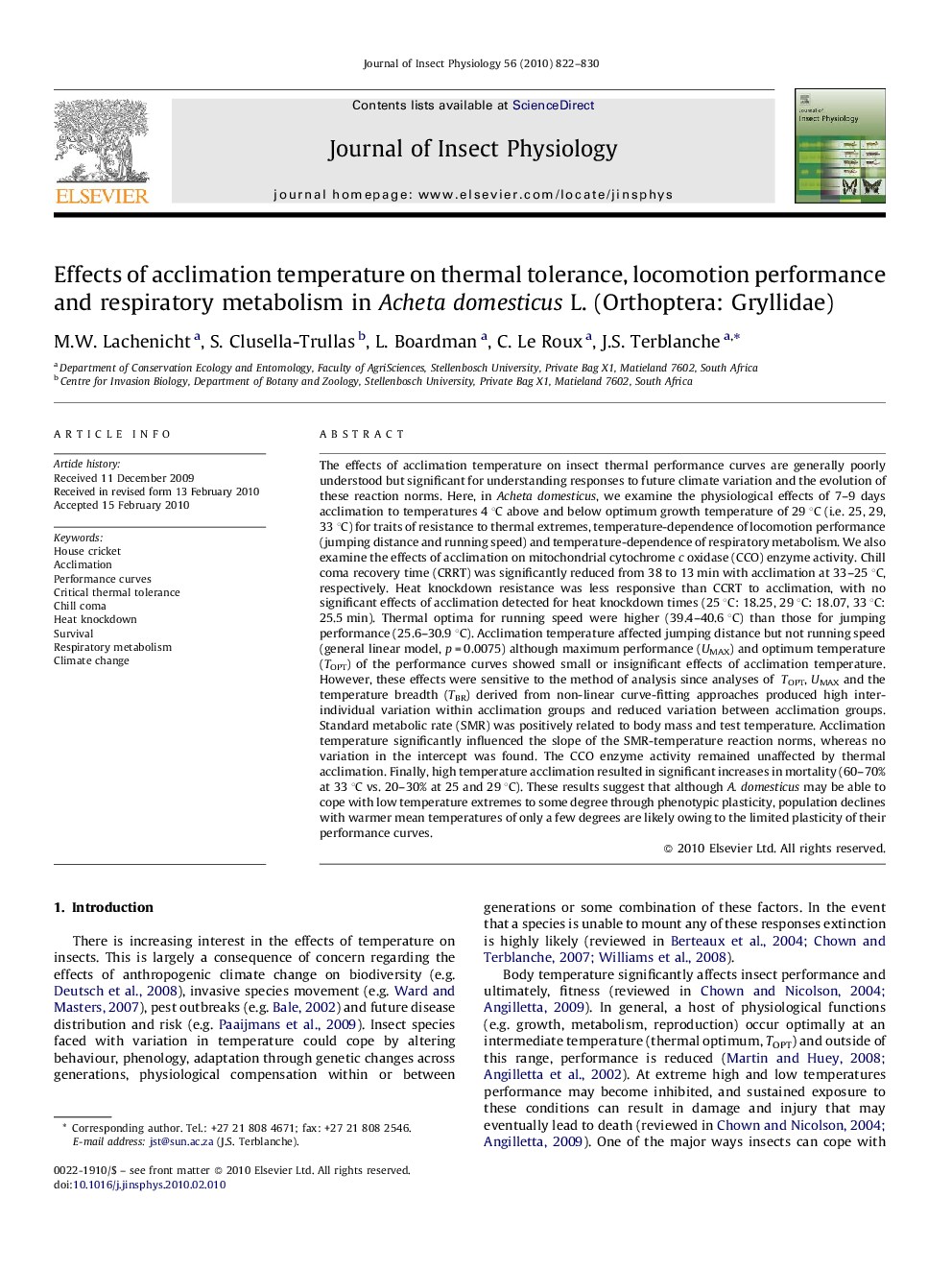| کد مقاله | کد نشریه | سال انتشار | مقاله انگلیسی | نسخه تمام متن |
|---|---|---|---|---|
| 2840868 | 1165361 | 2010 | 9 صفحه PDF | دانلود رایگان |

The effects of acclimation temperature on insect thermal performance curves are generally poorly understood but significant for understanding responses to future climate variation and the evolution of these reaction norms. Here, in Acheta domesticus, we examine the physiological effects of 7–9 days acclimation to temperatures 4 °C above and below optimum growth temperature of 29 °C (i.e. 25, 29, 33 °C) for traits of resistance to thermal extremes, temperature-dependence of locomotion performance (jumping distance and running speed) and temperature-dependence of respiratory metabolism. We also examine the effects of acclimation on mitochondrial cytochrome c oxidase (CCO) enzyme activity. Chill coma recovery time (CRRT) was significantly reduced from 38 to 13 min with acclimation at 33–25 °C, respectively. Heat knockdown resistance was less responsive than CCRT to acclimation, with no significant effects of acclimation detected for heat knockdown times (25 °C: 18.25, 29 °C: 18.07, 33 °C: 25.5 min). Thermal optima for running speed were higher (39.4–40.6 °C) than those for jumping performance (25.6–30.9 °C). Acclimation temperature affected jumping distance but not running speed (general linear model, p = 0.0075) although maximum performance (UMAX) and optimum temperature (TOPT) of the performance curves showed small or insignificant effects of acclimation temperature. However, these effects were sensitive to the method of analysis since analyses of TOPT, UMAX and the temperature breadth (TBR) derived from non-linear curve-fitting approaches produced high inter-individual variation within acclimation groups and reduced variation between acclimation groups. Standard metabolic rate (SMR) was positively related to body mass and test temperature. Acclimation temperature significantly influenced the slope of the SMR-temperature reaction norms, whereas no variation in the intercept was found. The CCO enzyme activity remained unaffected by thermal acclimation. Finally, high temperature acclimation resulted in significant increases in mortality (60–70% at 33 °C vs. 20–30% at 25 and 29 °C). These results suggest that although A. domesticus may be able to cope with low temperature extremes to some degree through phenotypic plasticity, population declines with warmer mean temperatures of only a few degrees are likely owing to the limited plasticity of their performance curves.
Journal: Journal of Insect Physiology - Volume 56, Issue 7, July 2010, Pages 822–830